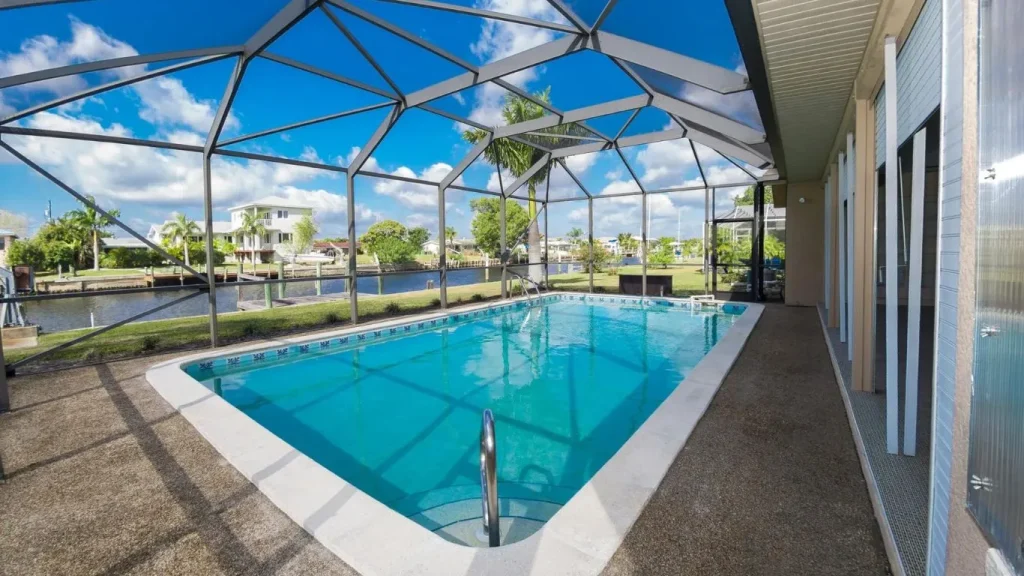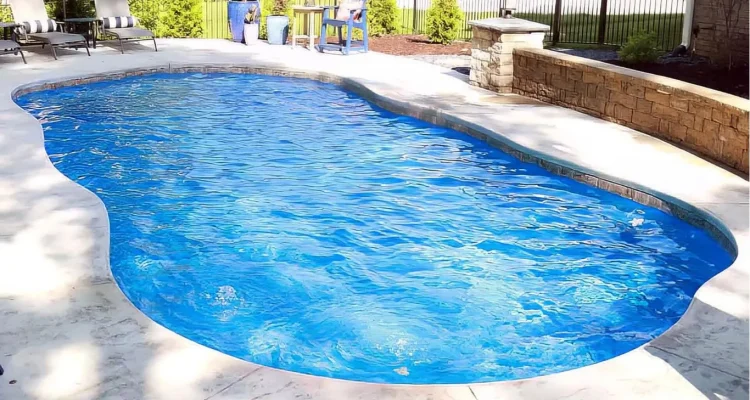Introduction
Saltwater pools are becoming increasingly popular among homeowners due to their numerous benefits and ease of maintenance compared to traditional chlorine pools. If you’re a proud owner of a saltwater pool or considering getting one, understanding how to maintain it properly is crucial. This guide will walk you through everything you need to know about keeping your saltwater pool in pristine condition.

Understanding Saltwater Pools
So, what exactly is a saltwater pool? Unlike traditional chlorine pools, saltwater pools use a salt chlorinator to produce chlorine from salt. This process creates a softer, gentler swimming experience and reduces the need for handling harsh chemicals.
The main differences between saltwater and traditional chlorine pools lie in the method of chlorine production and the overall maintenance approach. While both types of pools require regular upkeep, saltwater pools tend to be less demanding in terms of chemical balancing.
Benefits of Saltwater Pools
Saltwater pools offer several health benefits, including reduced skin and eye irritation. The water feels smoother and less harsh compared to traditional chlorine pools, making it more enjoyable for swimmers.
From a cost perspective, saltwater pools can be more economical in the long run. While the initial setup cost might be higher, the ongoing expenses for chemicals and maintenance are generally lower.
Environmentally, saltwater pools are a better option as they produce fewer chemical byproducts, contributing to a greener and more sustainable swimming environment.
Essential Equipment for Saltwater Pools
To maintain a saltwater pool, you need specific equipment. The most important is the saltwater chlorinator, which is responsible for converting salt into chlorine. Additionally, you’ll need a reliable pool pump and filter to keep the water clean and circulating properly. A pool heater can be an optional addition, depending on your climate and personal preference.
Setting Up Your Saltwater Pool
Setting up a saltwater pool involves a few critical steps. Initially, you need to install the pool and the necessary equipment. Once the pool is ready, you’ll add the required amount of salt, typically around 3,000 parts per million (ppm), to the water. It’s essential to balance the water chemistry by adjusting the pH, alkalinity, and calcium hardness levels.
Regular Maintenance Tasks
Regular maintenance is key to keeping your saltwater pool in top condition. Here’s a breakdown of what you should do:
- Daily Maintenance Checklist
- Check the pool’s water level.
- Inspect the pool equipment for any issues.
- Skim the surface to remove debris.
- Weekly Maintenance Checklist
- Test the water chemistry (pH, chlorine, alkalinity).
- Clean the skimmer and pump baskets.
- Brush the pool walls and floor.
- Monthly Maintenance Checklist
- Check and clean the saltwater chlorinator cell.
- Inspect and clean the filter.
- Adjust the water chemistry as needed.
Monitoring Salt Levels
Maintaining the correct salt levels is crucial for the efficient operation of your saltwater pool. The ideal salt level is usually between 2,700 and 3,400 ppm, depending on the manufacturer’s recommendation. Testing the salt levels can be done using salt test strips or electronic salt testers. If the salt level is too low, add more salt. If it’s too high, you may need to partially drain and refill the pool with fresh water.
Water Chemistry Balance
Balancing the water chemistry in a saltwater pool involves several factors:
- pH Levels: Aim for a pH level between 7.4 and 7.6. Use pH increaser or decreaser as needed.
- Alkalinity: Maintain alkalinity between 80 and 120 ppm. Baking soda can be used to increase alkalinity.
- Calcium Hardness: Ideal levels are between 200 and 400 ppm. Adjust using calcium chloride if necessary.
- Cyanuric Acid: This stabilizer helps protect chlorine from UV rays. Aim for 30 to 50 ppm.
Cleaning the Pool
Regular cleaning is essential to keep your pool free of debris and algae. Use a pool skimmer to remove leaves and other debris from the surface. Vacuum the pool floor and brush the walls regularly to prevent algae buildup. Cleaning the filter is also important to ensure it operates efficiently.
Troubleshooting Common Issues
Even with proper maintenance, you might encounter some common issues:
- Cloudy Water: This can be caused by poor filtration or imbalanced water chemistry. Check and clean the filter and adjust the chemical levels.
- Algae Growth: Brush and vacuum the affected areas, and shock the pool if necessary.
- Salt Buildup: Clean the salt chlorinator cell regularly to prevent scale buildup.
Seasonal Maintenance
Seasonal changes require specific maintenance tasks:
- Preparing for Summer: Ensure the water chemistry is balanced and the equipment is in good working order. Consider using a pool cover to keep the pool clean and reduce evaporation.
- Winterizing Your Saltwater Pool: If you live in a cold climate, you’ll need to winterize your pool. Lower the water level, add winterizing chemicals, and cover the pool to protect it from debris and freezing temperatures.
Safety Tips for Saltwater Pools
Safety should always be a priority. Handle pool chemicals with care, following the manufacturer’s instructions. Make sure to have proper safety measures in place, such as pool fences, alarms, and covers, to prevent accidents.
Energy Efficiency Tips
You can reduce the energy consumption of your saltwater pool by using energy-efficient equipment and practices. Consider investing in a variable-speed pool pump, which uses less energy than traditional pumps. Using a pool cover can also help retain heat and reduce the need for heating.
Cost Management
Maintaining a saltwater pool can be cost-effective if managed properly. Create a budget for regular maintenance tasks and equipment replacement. Reducing operational costs can be achieved by optimizing the use of chemicals and energy-efficient practices.
FAQs About maintain a saltwater pool
- How often should I check the salt levels?
- It’s recommended to check the salt levels at least once a month or more frequently if you’re experiencing issues with the chlorinator.
- Can I convert my chlorine pool to a saltwater pool?
- Yes, you can convert a chlorine pool to a saltwater pool by installing a salt chlorinator and adding the appropriate amount of salt to the water.
- Is a saltwater pool safe for pets?
- Generally, saltwater pools are safe for pets, but it’s important to monitor them to ensure they don’t drink large amounts of pool water.
- What are the initial setup costs for a saltwater pool?
- The initial setup costs can vary, but you can expect to pay between $1,500 and $2,500 for a salt chlorinator system and additional costs for salt and other equipment.
- How long does a saltwater chlorinator last?
- A well-maintained saltwater chlorinator can last between 3 to 7 years, depending on usage and maintenance practices.
Conclusion
Maintaining a saltwater pool might seem daunting at first, but with the right knowledge and routine, it can be a straightforward and rewarding process. By following the guidelines outlined in this article, you can enjoy a clean, safe, and inviting saltwater pool year-round.


Congratulation!